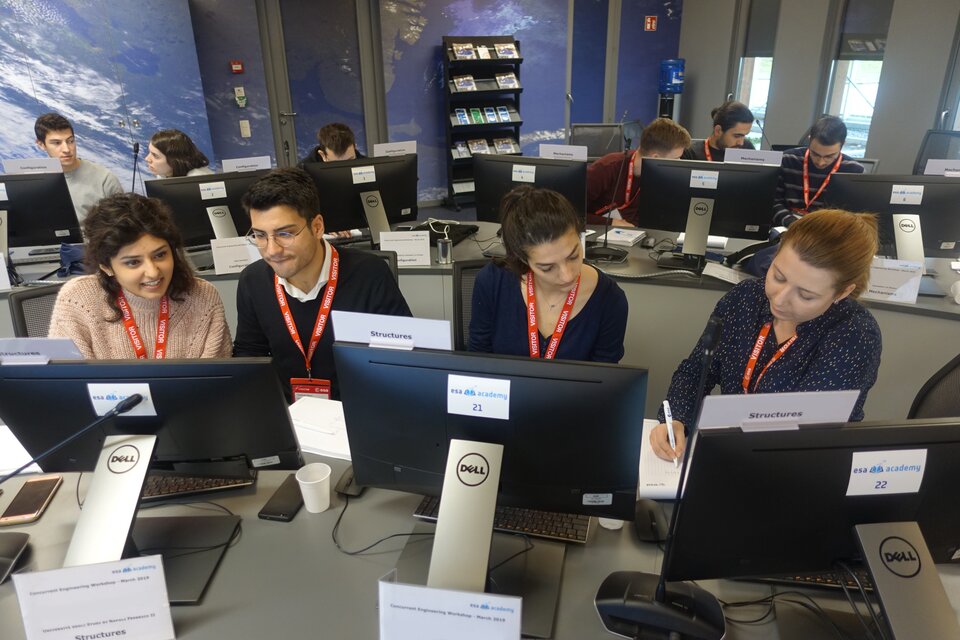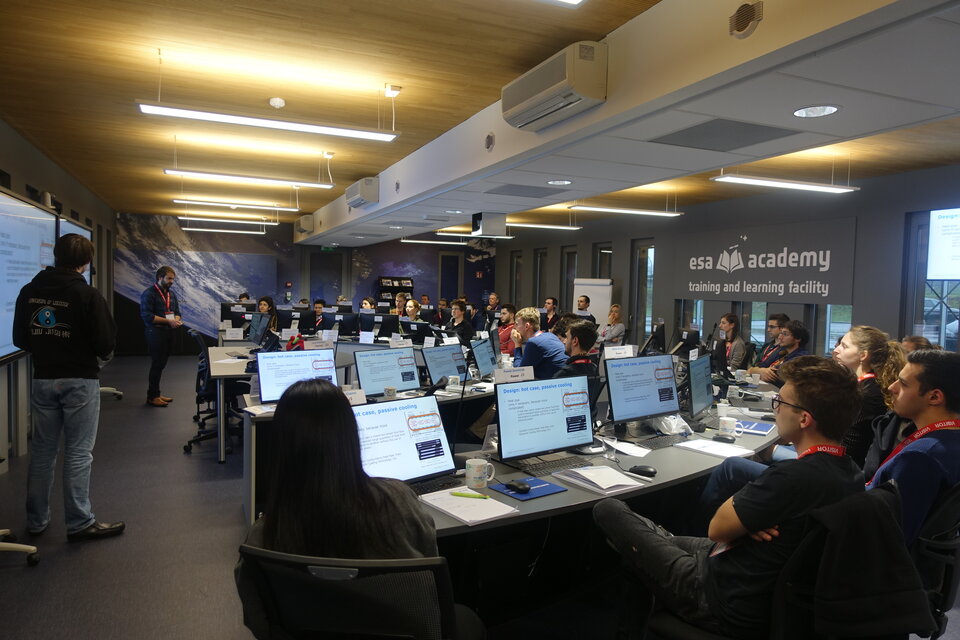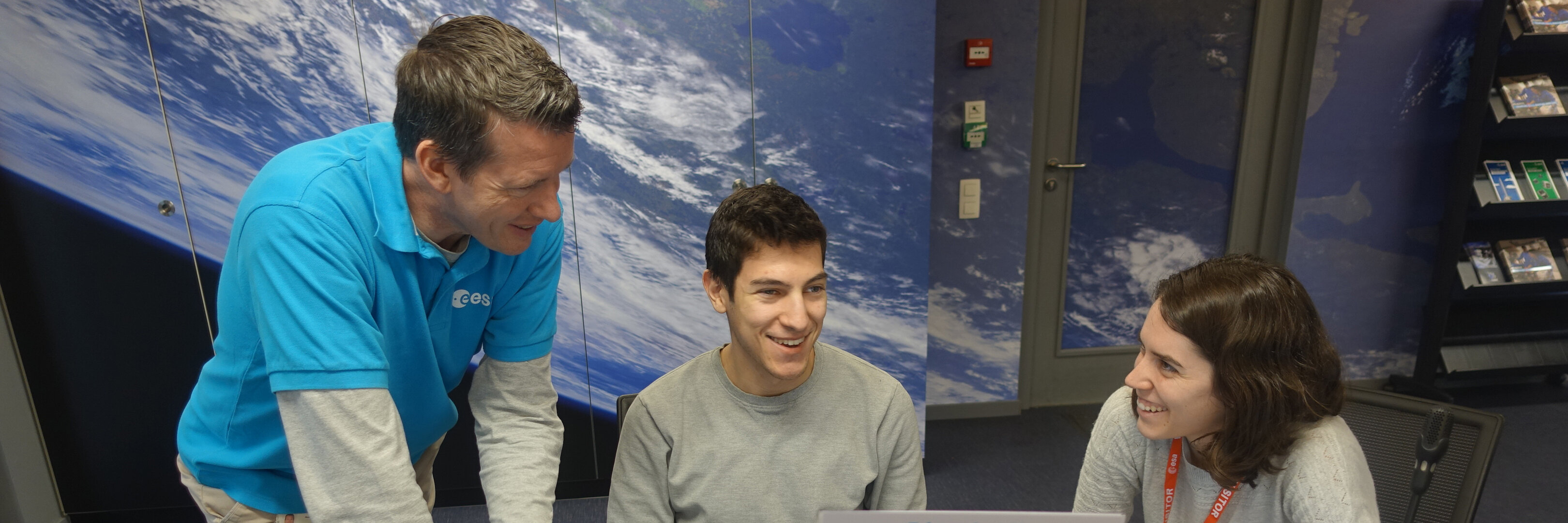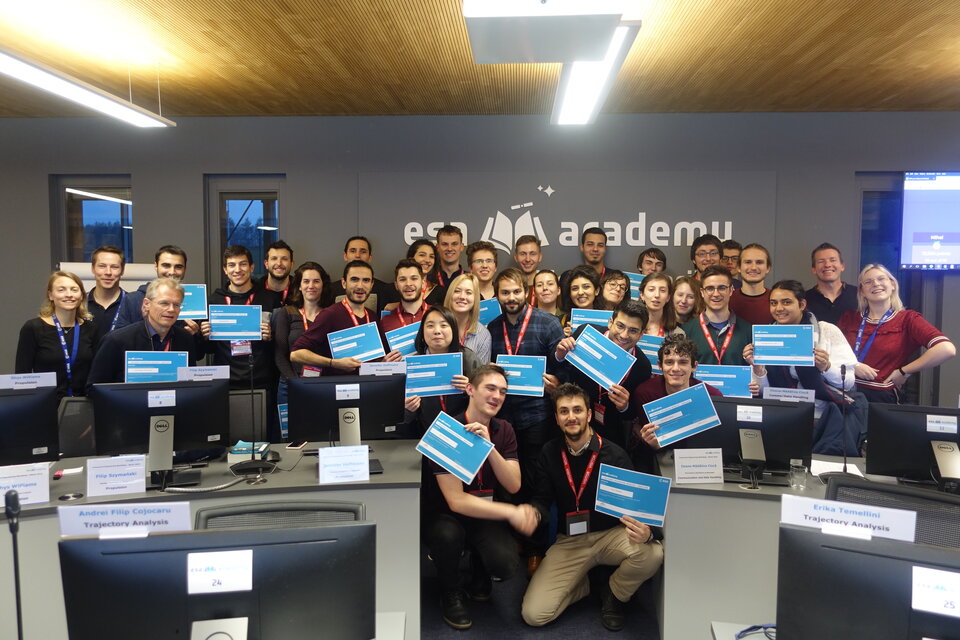SMART students complete ESA Academy’s latest Concurrent Engineering Workshop
A group of 30 adventurous university students from 11 different ESA Member States recently journeyed to the ESA Education Training Centre, ESEC-Galaxia, Belgium. Their mission: spend 12 to 15 March 2019 in the ESA Academy’s Training and Learning Facility engrossed in ESA Academy’s latest Concurrent Engineering Workshop.
Concurrent Engineering is an innovative method of designing and developing products. Contrary to traditional design methods, in Concurrent Engineering all space mission subsystems are designed simultaneously, which, when used skilfully, can lead to huge improvements in efficiency. The ESA Academy’s Training and Learning Facility is also an educational Concurrent Design Facility (CDF), which the students were able to use.
"The Concurrent Engineering Workshop is a one-of-a-kind opportunity for students from different European countries to meet and work together on the design of a scientific space mission concept,” summarised a Polish student from the AGH University of Science and Technology. “The whole process goes under the eye of ESA experts who provide advice and clues. It was great to see how good cooperation between many engineers from different areas leads to the finalisation of a mission concept. There are two things I liked most: open-minded, smart and friendly people gathered in one place; and the teamwork spirit that accompanied us during these four days."

The students’ goal was to become familiarised with the Concurrent Engineering approach and its benefits, and with the Open Concurrent Design Tool (OCDT) used in ESA’s CDF. On hand to guide the students in their endeavours were two ESA CDF System Engineers, ably assisted by a Swiss National Trainee, from ESA’s Systems and Concurrent Engineering Section. To kick things off, the students gathered to play the EcoDesign game and learn about the environmental impacts of a space mission. It was a good opportunity for them to get to know each other as well as learning about the lifecycle assessment of satellites.
The ESA Academy’s training sessions strive for realism, so lessons were given within an exciting context – designing a hypothetical space mission. On the first day, the students were given their briefing: they must use Concurrent Engineering to design a probe called the SMART Mapper to chart the Moon’s polar regions. They were also introduced to the Concurrent Engineering approach, along with how to use the OCDT software.
Could they design the mission in just four days? Normally this would be impossible, but Concurrent Engineering is a powerful method! “The Concurrent Engineering approach is completely different from how I have ever worked,” explained a German student from the Friedrich-Alexander University of Erlangen-Nuremberg. “It's absolutely mind-blowing how 30 students can set up a full satellite within days. I think it's a great way to combine knowledge of many different research fields and let us learn from each other.”

The students were divided into teams to cover different disciplines:
1. Configuration
2. Structure
3. Mechanisms
4. Propulsion
5. Mission Analysis
6. Attitude and Orbit Control
7. Power
8. Thermal
9. Communication & Data Handling
10. Optics & Sensors
The next day was dedicated to establishing a preliminary design, allowing the students to assess, during a first iteration, the needs of each discipline. The following day saw the students devise a second iteration, consolidating their design, setting the choice of orbit, and finalising the product tree. Then came the third and final iteration, which saw the total mass of the spacecraft reduced following some serious improvements in the propulsion and structure disciplines.
The week concluded with the students presenting their results to the trainers. They detailed their final designs per discipline and explained the trade-offs they had to perform to obtain the best results, as well as potential improvements and open tasks to still be performed. The experts were suitably impressed with the proposed SMART Mapper mission!
The students’ adventure culminated in their receiving certificates of participation that, along with workshop transcripts, allow them to claim ECTS credit(s) from their universities. The students also braved the poor weather to visit ESEC-Redu and the PROBA Control Room, which they enjoyed very much.
A Spanish student from the ISAE-SUPAERO was keen to document their thoughts: "This workshop has been an amazing experience. The project carried out was engaging, interesting and very dynamic. Learning the Concurrent Engineering approach and the OCDT tool in a setting like the ESEC-Galaxia is something really valuable. In addition, the people were simply awesome. It has been a pleasure meeting and working alongside other students who share a passion for space and who are amazing people. Likewise, the experts are not only knowledgeable, but kind, open and very friendly. During this workshop we all have exchanged opinions, stories and anecdotes, played games and, overall, had great fun. It is certainly something I would recommend, without a doubt."
To find more information about upcoming and future ESA Academy training opportunities, please visit the Current opportunities page.
Contact: tlp @ esa.int



